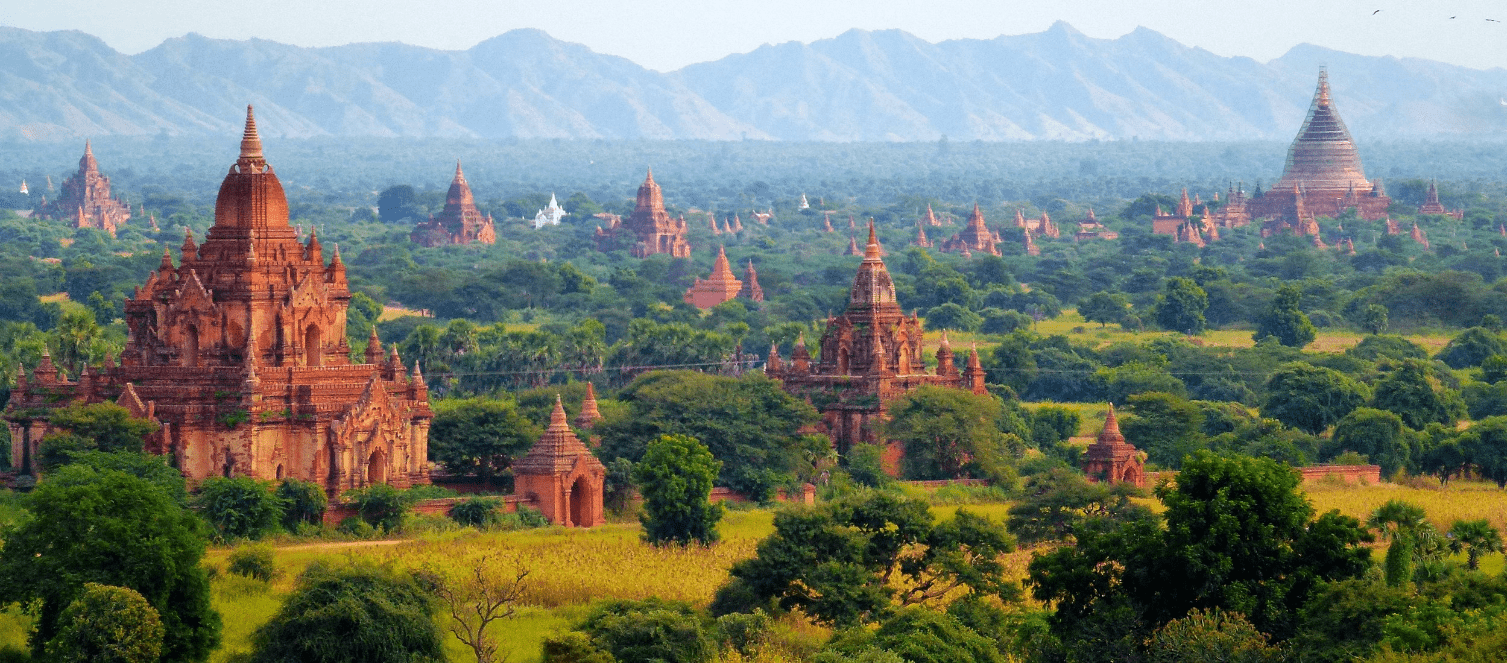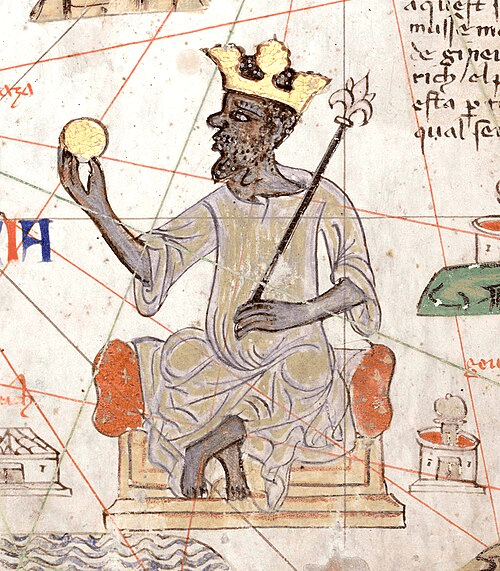Name of Unit 1.
What is "The Global Tapestry"?
Persian (and Muslim) scholar and poet; one of the most widely published poets ever in world history.
Who was Rumi?
Founder of the Mongol Dynasty - united Mongol tribes to create the largest contiguous land based empire of world history (it was so big it was later broken into 4 "khanates".
Who was Genghis Khan?
Venetian merchant who traveled to the court of Kublai Khan and the Yuan Dynasty - and was there well over a decade. His adventures were documented by a writer that he was jailed with after his return. Hint - he wasn't lost.
Who was Marco Polo?
This peninsula was historically a semi-autonomous vassal state of Chinese empires. During the Cold War of the 20th century, it was divided (and still is today) into North and South.
What is Goryeo aka Korea?
Time period of unit 1.
What is circa 1200-1450?
This Moroccan Muslim scholar, explorer and author of " A Gift to Those Who Contemplate the Wonders of Cities and the Marvels of Travelling", where he recorded his journeys all over Dar al Islam and was welcomed in the courts between 1325-1332.
Who was Ibn Battuta?
Name given to the stabilizing effects of the conquests of the Mongol Empire on the social, cultural and economic life of the inhabitants of the vast Eurasian territory that the Mongols conquered in the 13th and 14th centuries. It facilitated trade, cultural exchange and population diasporas during this time period.
What was the Pax Mongolia?
A South Asian language primarily used in Pakistan and parts of India. It developed from the interaction of Persian, Arabic, Turkish, and local Indian languages, particularly in the Indian subcontinent. This language's evolution was influenced by historical events like the Mughal Empire, which brought together diverse languages and cultures. Today, 230 million people speak this language.
What is Urdu?
Similar to a code of chivalry, this was the moral/honor code of Japanese samurai in the Shogunate time period.
What is Bushido?
Units 1 (and 2) are collectively known as this time period.
What is the post-classical period, circa 1200-1450?
The Song Dynasty introduced this type of food that could have an extended growing season and grow in warmer and colder climates, therefore is an illustrative example of how a government can intentionally steer agriculture to support the population.
What is Champa Rice?
A 14th-century Turco-Mongol conqueror who founded the Timurid Empire in Persia (present day Iran and Afghanistan and central Asia).
Who was Tamerlane?
This religion that was founded in Northern India circa 500s bce would spread across the Silk Trade networks to the east where it would be syncretized with other native belief systems. Many temples were built and still remain throughout much of South, East, and Southeast Asia, such as BAGAN in Myanmar, which has 10,000 temples. 
What is Buddhism?
The process by which non-Chinese societies or groups are acculturated or assimilated into Chinese culture, particularly the language, societal norms, cultural practices, and ethnic identity of the Han Chinese—the largest ethnic group of China.
What is sinification?
The Global Tapestry of this time period in the Iberian Peninsula, Northern Africa, the Middle East and much of Central Asia was dominated by the Madrasas and trade networks of these different groups who were followers of the teachings of Muhammed. 
What is Dar al Islam?
The type of government (similar to feudalism in Europe) that Japan had right up to the Meiji Restoration in the 19th century.
What was a Shogunate?
He might have been the richest man the world has ever known, he was the King of Mali, and while he travelled on his pilgrimage to Mecca he had mosques built, recruited scholars, and donated huge sums of money wherever he went. He is pictured on an Iberian map from the time period. The Mali Empire's wealth came from the trade of gold, salt, ivory, ceramics and enslaved people across the Trans-Saharan trade network. 
Who was Mansa Musa?
In the Americas, this city was located and built by the Aztecs (and led by their King Montezuma II). It was engineered with floating gardens, planned streets and other infrastructure such as causeways, palaces, merchants, etc. The Spanish, led by Conquistador Cortez would destroy it (after they recorded how impressive it was).
What was Technochitlan?
Illustrative example of a government involved in diplomacy that has drastic positive changes for the population in the Song dynasty and those that would follow. is a quick-maturing, drought resistant crop that can allow two harvests of sixty days each per growing season. It was then sent to Song China in the 11th century as a tribute gift from a neighboring southern kingdom during the reign of Emperor Zhenzong of Song (r. 997–1022).Song dynasty officials gave the quick-growing crop to peasants across China in order to boost their crop yields, and its rapid growth time was crucial in feeding the burgeoning Chinese population of over 100 million. It spread with the help of merchants transporting it throughout the silk road.
What is Champa Rice?
The Mongols conquered this empire that was the center of Dar al Islam, and destroyed Baghdad in the process.
What was the Abbasid Empire/Sultanate?
He was a Muslim Admiral of the Ming Dynasty that led the massive treasure fleet on multiple voyages throughout Indonesia, the coasts of India, the Middle East and Eastern Africa (the Swahili coast). These were done as "diplomatic" missions to establish Ming dominance over the Indian Ocean trade networks. They were discontinued after his death and a shift in the priorities of the Ming Dynasty to focus on their canal building and wall building (those pesky Mongols again).
Who was Zheng He?
A language and culture of the people along the central east coast of Africa, where the Great Zimbabwe Empire existed. This region had extensive trade and interactions with Arabian, Indian and even Chinese merchants. The Portuguese would be the first Europeans to arrive there by sea.
What is Swahili?
Forced labor system of the Incan Empire (it was how people paid their taxes and what built the Incan road system in the Andes mountains on the west coast of South America) that the Spanish would adopt and then enslave the Incas under it.
What was the Mit'a System?
A moral, ethical, and metaphysical Chinese philosophy influenced by Confucianism, which originated with Han Yu (768–824) and Li Ao (772–841) in the Tang dynasty, and became prominent during the Song and Ming dynasties under the formulations of Zhu Xi (1130–1200). After the Mongol conquest of China in the thirteenth century, Chinese scholars and officials restored and preserved neo-Confucianism as a way to safeguard the cultural heritage of China.[1]
What is neo-Confucianism?
This northeastern Italian republic was first built by people fleeing after the Roman empire "fell". They built it on islands with lagoons for their safety and protection from land invasions. It would become extremely wealthy during this time period because of its connections to trade in the east and its extremely powerful navy.
What is Venice?
Historically known as Abyssinia, this northeastern empire were Christian and are believed to be descendants of the first followers of Jesus that migrated south from the Levant.
What is the Ethiopian Empire?
Capital city and trade center (as well as center of learning for Dar al Islam) of the empire of Mali.
What is Timbuktu?
Moveable type, mass production of books, adapted from Chinese and Indian technologies, this German is credited for it.
Who was Gutenberg?
Inns (especially in the Islamic and Buddhist realms of the Trans-Saharan Trade Networks and Silk Trade Networks) that housed travelers and made sure they and their valuables (including animals) were safe and fed. These were also places of great cultural and technological exchange.
What were caravanserais?